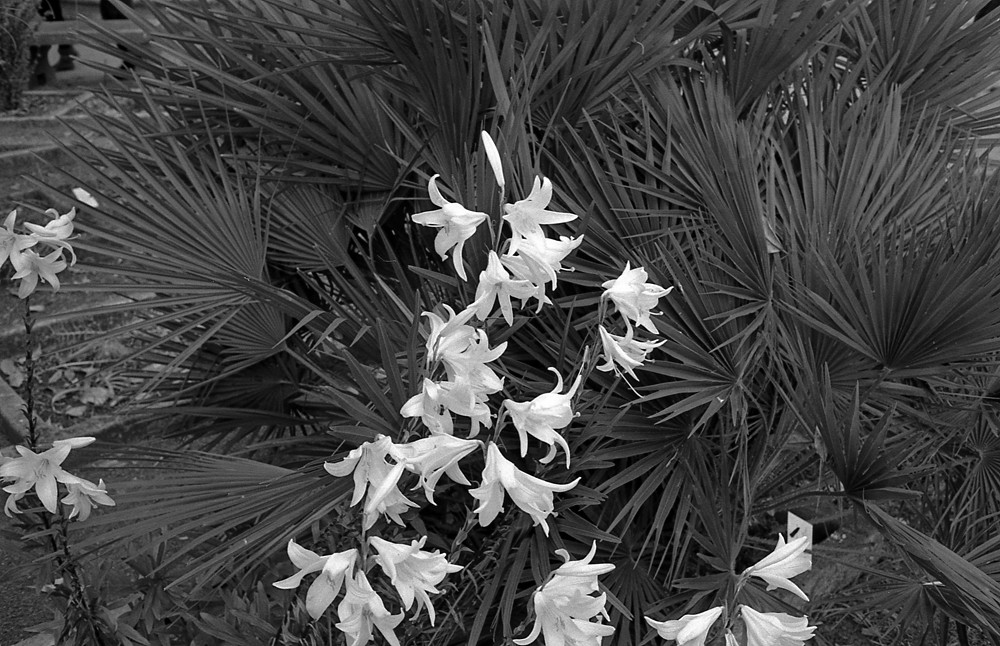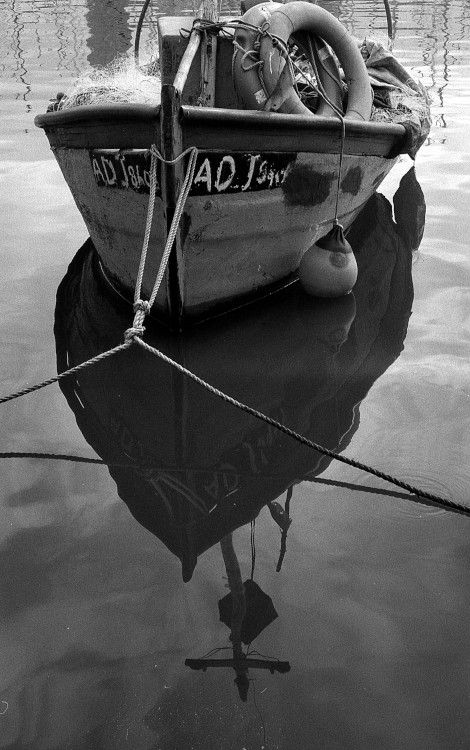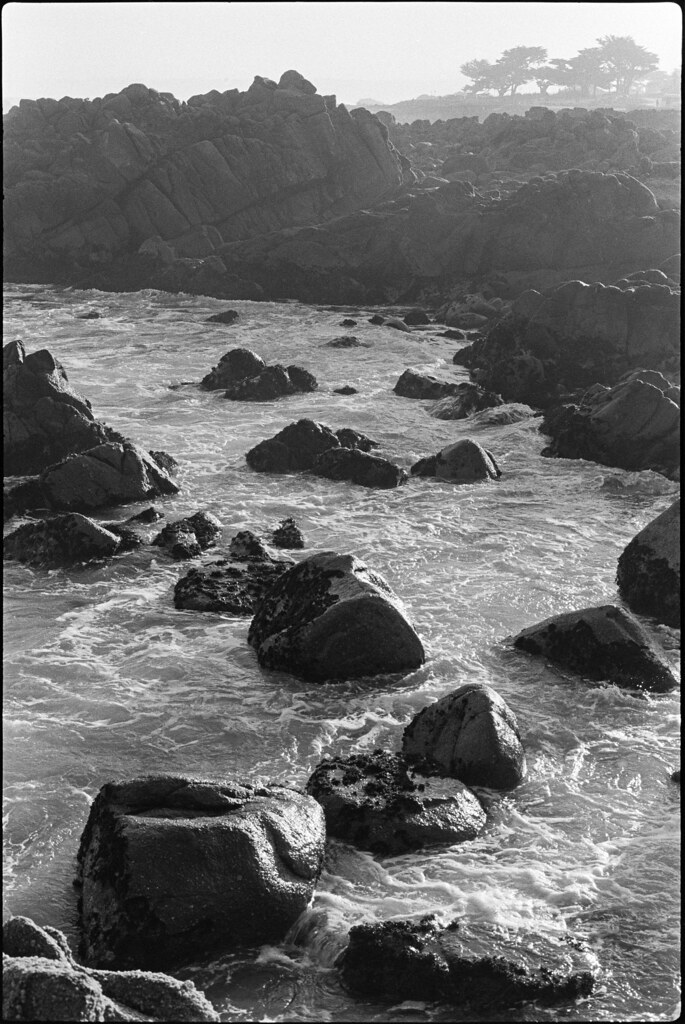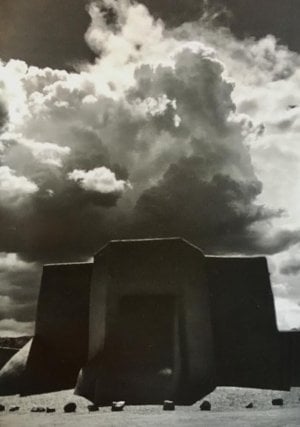Coldkennels
Barnack-toting Brit.
Yeah, I moved away from Rodinal for a while when I found myself shooting Tri-X, HP5+ and Fomapan 400 exclusively. Going back to anything rated 100 ISO and lower really shows off what Rodinal can do, and the resulting negatives are more pleasing (to me) than anything I ever got from something like Tri-X, regardless of the developer.@Coldkennels you basically explained all the reasons why I stopped using Rodinal. With fast films results are grainy (even more so if underexposed) and terrible streaks when i did stand developing. Also, I found that i had to expose Tri-x to 250asa to get a good negative. Never used it with slow films thought. Apparently slow films are its remit.
That said, the one fast film that Rodinal REALLY worked with was Ilford's Surveillance P3, which hasn't been made for quite some time, so I didn't include it in the earlier post. That, oddly, looked at its best with a one or two stop push from 400 ISO to 800 or 1600 ISO in Rodinal 1:50. I shot something like 450ft of that stuff in the early 2010s and never found another developer that made it shine like Rodinal did, and I've never understood why.
This is a terrible scan from when I only had a flatbed to hand, but the finished 8x10 print on RC multigrade paper was fantastic:

Cursive, The Rescue Rooms, Nottingham, 10th June 2012 by Tony Gale, on Flickr
I wish I could still get hold of Surveillance P3. The film base was annoyingly thin, but it was a joy to shoot and print once I got it dialled in.
Bingley
Mentor
I’ve also gotten some good results w/ Tri-X metered at 250 and then developed in HC 110 dil. h for 11:30 mins… extending the development time seems to have smoothed out the grain and done nice things to the dark grays and mid-tones. Edit: One thing I should add: my development method here owed a great deal to a late member here, charjohncarter, and incorporated his agitation technique. John recommended an initial 30 seconds of agititation, followed by three inversions every three or four minutes counting down. That’s a lot less agititation than is usually recommended or that I use now with Perceptol, but for Tri-X in HC 110 dil. h his approach worked well.
 Jardim Botanico by Steve Macfarlane, on Flickr
Jardim Botanico by Steve Macfarlane, on Flickr
 Belem by Steve Macfarlane, on Flickr
Belem by Steve Macfarlane, on Flickr
 Jardim Botanico by Steve Macfarlane, on Flickr
Jardim Botanico by Steve Macfarlane, on Flickr
 Jardim Botanico by Steve Macfarlane, on Flickr
Jardim Botanico by Steve Macfarlane, on Flickr Belem by Steve Macfarlane, on Flickr
Belem by Steve Macfarlane, on Flickr Jardim Botanico by Steve Macfarlane, on Flickr
Jardim Botanico by Steve Macfarlane, on Flickr
Last edited:
johnf04
Well-known
I use Rodinal because it keeps - I only develop a few films a year, and with the last 2, including the one here - I finished a bottle I opened in 2005. I also stick with 1 film at a time. Currently that's Kentmere 100, and when that runs out there's a roll of Arista Edu Ultra 100 ready to go in the bulk loader.
Darthfeeble
But you can call me Steve
Not to hijack the thread but what developer would you all recommend for a relative newbie. I'm shooting film for the first time in over 40 years, strictly C41 B&W. I have been sending it out and scanning the negs and while some come out pretty good, I don't get the results from Tri X that others do. On a happy note my best results have been from inexpensive Kentmere film. Any help is much appreciated.
dourbalistar
Buy more film
Speaking of LegacyPro L110, it has been my primary developer for the last several years. It's a clone of HC-110, but I settled on it for several reasons: inexpensive, comes in smaller 1 pint bottle so I don't worry as much about expiry, easy to pour (not viscous like HC-110 syrup), and no hazardous shipping restrictions from places like B&H and Freestyle. I use it at 1:31, which is the equivalent of Dilution B, with a standard scheme of 30 seconds of initial agitation followed by 3 inversions per minute thereafter. I've gotten results that I'm happy with, developing a variety of film including Ilford HP5+, Kodak 400TX, Ultrafine eXtreme 400, ORWO N74+, and Kentmere Pan 400. Here are some examples with various film, camera, and lens combinations.Lifting the shadows is partly it, but I also like what the extra stop or so of exposure does to the mid-tones. I find that I have to make fewer adjustments in Lightroom. Here are some samples from Prague, taken in June 2021 with a Rollei 35S camera. All three were taken on Tri-X that I metered at 250, and then developed in Legacy Pro 110 dil. h for 9 minutes, which is the dilution for Tri-X at 400...
Ilford HP5+:

2017.10.07 Roll #129-01591-Pano-positive.jpg by dourbalistar, on Flickr
Kodak 400TX:

2021.05.29 Roll #277-06238-Pano-positive.jpg by dourbalistar, on Flickr
Ultrafine eXtreme 400:

2020.10.06 Roll #259-05408-positive.jpg by dourbalistar, on Flickr
dourbalistar
Buy more film
The new forum software seems to limit to 3 photos per post, so here are a few more film/camera/lens combos, all with LegacyPro L110:
ORWO N74+:

2019.06.28 Roll #209-03772-positive.jpg by dourbalistar, on Flickr
Kentmere Pan 400:

2022.07.12 Roll #311-07232-positive.jpg by dourbalistar, on Flickr
It even worked on a cross-processed roll of Ilford XP2 Super. I probably should have given the XP2 one or two additional stops of exposure, but the results are virtually grain-free:

2021.03.06 Roll #272-05980-Pano-positive.jpg by dourbalistar, on Flickr
ORWO N74+:

2019.06.28 Roll #209-03772-positive.jpg by dourbalistar, on Flickr
Kentmere Pan 400:

2022.07.12 Roll #311-07232-positive.jpg by dourbalistar, on Flickr
It even worked on a cross-processed roll of Ilford XP2 Super. I probably should have given the XP2 one or two additional stops of exposure, but the results are virtually grain-free:

2021.03.06 Roll #272-05980-Pano-positive.jpg by dourbalistar, on Flickr
Coldkennels
Barnack-toting Brit.
It depends a lot on what film stocks you use, what format you shoot, what lenses you prefer (modern high-contrast or older uncoated), and what look you want.Not to hijack the thread but what developer would you all recommend for a relative newbie. I'm shooting film for the first time in over 40 years, strictly C41 B&W. I have been sending it out and scanning the negs and while some come out pretty good, I don't get the results from Tri X that others do. On a happy note my best results have been from inexpensive Kentmere film. Any help is much appreciated.
The "standard", which is good to use as a point of reference, is D-76 or ID-11 (they're basically the same thing). The catch is that you mix them from powder and the stock solution it produces doesn't last long, so you have to do a few rolls in a short space of time. Also - and this is where I might get lynched - it's a pretty boring developer. I mean, it's fine, but it doesn't do anything exciting. It just works okay with almost any film. If you're still finding your feet, you could do a lot worse.
If you shoot slow-speed film or larger formats, Rodinal's a good standard. It's cheap, it keeps forever, and it's usually relatively easy to get hold of. It'll give you maximum sharpness but also tends towards higher grain, so not good for 35mm Tri-X or sub-micro formats.
400ISO in 35mm really needs HC-110 or similar - Ilfotec HC, LC29, etc.; they'll also work well for slower films but I find they bump contrast a bit more than Rodinal with some films. I really don't think there's much difference between the variants once you get the developing times ironed out.
Those are what I'd consider the basic three options. You can start working from there and pick out other developers depending on how creative you want to be (Pyrocat, Caffenol, etc.) or if you start using films that really demand something different (I believe Microphen is the recommend developer for Delta 3200, for instance; T-Max also has its own developer. You can use both with other films, but they're a bit more pricey than the alternatives).
Freakscene
Obscure member
Deardorff38
Mentor
Bingley
Mentor
I would recommend Legacy Pro 110 or Kodak HC 110 to someone starting out. They are relatively inexpensive and widely available, and work well w/ most black and white films. When I started developing my own bw film at home 15 or so years ago, I made the mistake of starting with Rodinal, and got some pretty ugly results. Dourbalistar’s photos in this thread are good examples of what you can get using Legacy Pro; it’s nearly identical to HC 110 except that it comes as non-syrupy liquid, so it’s a little easier to mix. And you can find lots of advice on the web about the various dilutions. I’ve used the unofficial dilution h for years and it’s never failed me.Not to hijack the thread but what developer would you all recommend for a relative newbie. I'm shooting film for the first time in over 40 years, strictly C41 B&W. I have been sending it out and scanning the negs and while some come out pretty good, I don't get the results from Tri X that others do. On a happy note my best results have been from inexpensive Kentmere film. Any help is much appreciated.
One other good developer for beginners is Diafine, because it’s not temperature sensitive. So unless you’re souping film in Death Valley in the middle of summer, you don’t have to worry about keeping your chemistry at a constant temp. It’s a compensating developer, so it develops everything on the negative and then stops. It comes in powder form; you mix up two baths: Solution A and Solution B. Pour Solution A into your tank, do 2-3 inversions per minute for 3-4 minutes, then pour out (you can reuse Diafine); repeat the same steps with Solution B. Wash for 30 seconds, then fix normally. Because you can reuse Diafine (some users swear it gets better w/ age), it’s very cost effective. You do get a speed bump, but that can work to your advantage.
Bingley
Mentor
Thanks!! Prague is a wonderful city… very photogenic and good for street photography.Nice tones @Bingley, Prague always has some photo worthy scenes.
Ukončete, prosím, výstup a nástup, dveře se zavírají.
agentlossing
Well-known
I always really enjoy your development process. I know some of it is in the digitization process, but I think you have your developer worked out to a fine art for sure.The new forum software seems to limit to 3 photos per post, so here are a few more film/camera/lens combos, all with LegacyPro L110:
ORWO N74+:
2019.06.28 Roll #209-03772-positive.jpg by dourbalistar, on Flickr
Kentmere Pan 400:
2022.07.12 Roll #311-07232-positive.jpg by dourbalistar, on Flickr
It even worked on a cross-processed roll of Ilford XP2 Super. I probably should have given the XP2 one or two additional stops of exposure, but the results are virtually grain-free:
2021.03.06 Roll #272-05980-Pano-positive.jpg by dourbalistar, on Flickr
Darthfeeble
But you can call me Steve
Thank you so much! I shoot so little that the powder might be the better choice in that I can make small loads. 35mm for the most part and a very little 120. I'd been favoring Delta 100 and 400 and if the D-76 holds back some of the contrast that might be a good thing. I also like the Kentmere films in the same ISO. I really appreciate your taking the time to offer so much help.It depends a lot on what film stocks you use, what format you shoot, what lenses you prefer (modern high-contrast or older uncoated), and what look you want.
The "standard", which is good to use as a point of reference, is D-76 or ID-11 (they're basically the same thing). The catch is that you mix them from powder and the stock solution it produces doesn't last long, so you have to do a few rolls in a short space of time. Also - and this is where I might get lynched - it's a pretty boring developer. I mean, it's fine, but it doesn't do anything exciting. It just works okay with almost any film. If you're still finding your feet, you could do a lot worse.
If you shoot slow-speed film or larger formats, Rodinal's a good standard. It's cheap, it keeps forever, and it's usually relatively easy to get hold of. It'll give you maximum sharpness but also tends towards higher grain, so not good for 35mm Tri-X or sub-micro formats.
400ISO in 35mm really needs HC-110 or similar - Ilfotec HC, LC29, etc.; they'll also work well for slower films but I find they bump contrast a bit more than Rodinal with some films. I really don't think there's much difference between the variants once you get the developing times ironed out.
Those are what I'd consider the basic three options. You can start working from there and pick out other developers depending on how creative you want to be (Pyrocat, Caffenol, etc.) or if you start using films that really demand something different (I believe Microphen is the recommend developer for Delta 3200, for instance; T-Max also has its own developer. You can use both with other films, but they're a bit more pricey than the alternatives).
Darthfeeble
But you can call me Steve
Thank you, I did develop my own years ago but my memory is fading and I just can't remember what I used. Appreciate your time, particularly the warning on Rodinal.I would recommend Legacy Pro 110 or Kodak HC 110 to someone starting out. They are relatively inexpensive and widely available, and work well w/ most black and white films. When I started developing my own bw film at home 15 or so years ago, I made the mistake of starting with Rodinal, and got some pretty ugly results. Dourbalistar’s photos in this thread are good examples of what you can get using Legacy Pro; it’s nearly identical to HC 110 except that it comes as non-syrupy liquid, so it’s a little easier to mix. And you can find lots of advice on the web about the various dilutions. I’ve used the unofficial dilution h for years and it’s never failed me.
One other good developer for beginners is Diafine, because it’s not temperature sensitive. So unless you’re souping film in Death Valley in the middle of summer, you don’t have to worry about keeping your chemistry at a constant temp. It’s a compensating developer, so it develops everything on the negative and then stops. It comes in powder form; you mix up two baths: Solution A and Solution B. Pour Solution A into your tank, do 2-3 inversions per minute for 3-4 minutes, then pour out (you can reuse Diafine); repeat the same steps with Solution B. Wash for 30 seconds, then fix normally. Because you can reuse Diafine (some users swear it gets better w/ age), it’s very cost effective. You do get a speed bump, but that can work to your advantage.
Steinberg2010
Well-known
Actually - I think there's a general recommendation against mixing up small amounts from a larger powder source (i.e. using a portion of a pouch of D-76 to mix enough for 1-2 rolls). You would have no way of knowing what proportions of the overall chemistry in the pouch you have in the small amount that you mixed up - your results could vary quite wildly. HC-110 and similar would probably be better - long shelf life and liquid chemistry. Use an oral syringe to measure out the volume you need for your tank.Thank you so much! I shoot so little that the powder might be the better choice in that I can make small loads. 35mm for the most part and a very little 120. I'd been favoring Delta 100 and 400 and if the D-76 holds back some of the contrast that might be a good thing. I also like the Kentmere films in the same ISO. I really appreciate your taking the time to offer so much help.
~S
julio1fer
Well-known
FP4+ in Beutler is a favorite combination.


dave lackey
Mentor
Wow! This thread is wonderful and it is of the highest interest to me of any threads anywhere in a very long time. 
Thanks to Bingley for starting this thread!!! I am quite impressed with the results!
Since 2017, I have been immersed in the world of digital medium format photography… primarily for the purpose of providing pro bono work for trauma survivors at the rehabilitation hospital here in Atlanta, and then I moved toward personal projects. Last year, however, I came back to film photography (after using a friend’s Mamiya 7ii for many months) and decided to return to 135 film. It has been a joyful time! And great therapy for me as a 24/7/365 caregiver.
By September 2022, I had completed a long term project comparing various BW films with selected developers. That was a major effort for me with the limited time and energy available every day.
The films I have enjoyed the most, and the ones I am currently committed to using now are: Acros II 100; Legacy Pro 100 (in the freezer); and TMax100. So far, the developers I paired them with are DD-X and Rodinal. I am still unsure of the best development protocols for both DD-X and Rodinal with these films. I think it would take me forever to settle those questions by trial and error.
I could sure use some help with recommendations of development times and agitation for these films! It would save me a lot of time.
After reading the posts above, I will now add a couple of faster films to try… most likely TMax 400 to start with, and maybe Kentmere 400 or whatever recommendations here lead me to…
Again, this is a highly valuable thread and everyone has a lot of experience to share and I think it will make our film user community stronger and better connected with what I see as the true craft of photography.
Thank you all in advance!
Thanks to Bingley for starting this thread!!! I am quite impressed with the results!
Since 2017, I have been immersed in the world of digital medium format photography… primarily for the purpose of providing pro bono work for trauma survivors at the rehabilitation hospital here in Atlanta, and then I moved toward personal projects. Last year, however, I came back to film photography (after using a friend’s Mamiya 7ii for many months) and decided to return to 135 film. It has been a joyful time! And great therapy for me as a 24/7/365 caregiver.
By September 2022, I had completed a long term project comparing various BW films with selected developers. That was a major effort for me with the limited time and energy available every day.
The films I have enjoyed the most, and the ones I am currently committed to using now are: Acros II 100; Legacy Pro 100 (in the freezer); and TMax100. So far, the developers I paired them with are DD-X and Rodinal. I am still unsure of the best development protocols for both DD-X and Rodinal with these films. I think it would take me forever to settle those questions by trial and error.
I could sure use some help with recommendations of development times and agitation for these films! It would save me a lot of time.
After reading the posts above, I will now add a couple of faster films to try… most likely TMax 400 to start with, and maybe Kentmere 400 or whatever recommendations here lead me to…
Again, this is a highly valuable thread and everyone has a lot of experience to share and I think it will make our film user community stronger and better connected with what I see as the true craft of photography.
Thank you all in advance!
steveyork
Well-known
Trying to think of all the developers I've used in my life --
Rodinal
HC-110
Clayton F76
DDX
Fomadon
Cinistill
FX9
Paranol-S
Ultrafin
D76
Diafine
Probably some others too. I could live with most of them, if I had to, except the cinistill which resulted in ball dots on the negs. Not a big fan of the fomadon either, although I only used one small bottle. Each has a definite look though.
Rodinal
HC-110
Clayton F76
DDX
Fomadon
Cinistill
FX9
Paranol-S
Ultrafin
D76
Diafine
Probably some others too. I could live with most of them, if I had to, except the cinistill which resulted in ball dots on the negs. Not a big fan of the fomadon either, although I only used one small bottle. Each has a definite look though.
Coldkennels
Barnack-toting Brit.
Isn't the Fomadon a Rodinal clone, or am I getting mixed up with one of Foma's other developers?Not a big fan of the fomadon either, although I only used one small bottle. Each has a definite look though.
I find it interesting that no one has mentioned Ilfosol 3 yet. I've often thought of trying it but I've heard reports of short shelf-life, which is concerning when a 500ml bottle would do either 16 or 25 rolls of 35mm, depending on dilution. Anyone with any experience with it want to chime in?
dourbalistar
Buy more film
Good stuff as always, @cjm! When you say going on 15 years, is that the same batch of Diafine? I have some in powdered form that I haven't mixed yet. Currently I keep all my developing chemistry in a plastic storage tub, but trying to figure out where I can store two more gallon jugs for Part A and Part B.I've used Diafine almost exclusively going on 15 years. Only with Kodak Tri-X the last few years.
Notes:
Time - 3 minutes in each bath
Temperature - I only pay attention to this if I suspect it is too cold. In that case, I heat up the gallon jugs in a warm bath for a few minutes.
15 seconds of continuous initial agitation
1 slow inversion every 30 seconds
Water as stop bath
Apply drying agent


Thank you, @agentlossing, much appreciated! I'm not sure if "fine art" is the right term, but I happy to share any and all details of my workflow.I always really enjoy your development process. I know some of it is in the digitization process, but I think you have your developer worked out to a fine art for sure.
Share:
-
This site uses cookies to help personalise content, tailor your experience and to keep you logged in if you register.
By continuing to use this site, you are consenting to our use of cookies.


